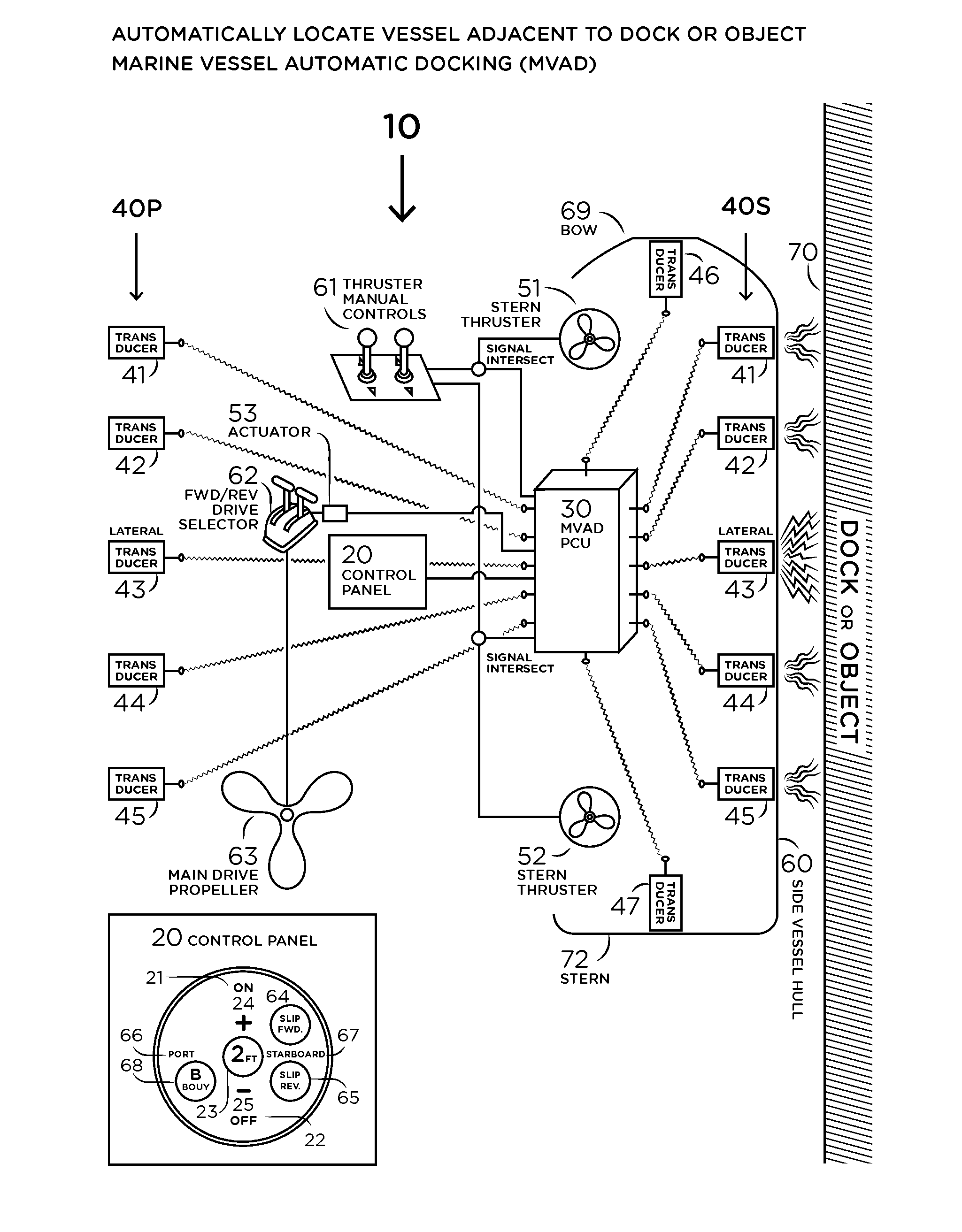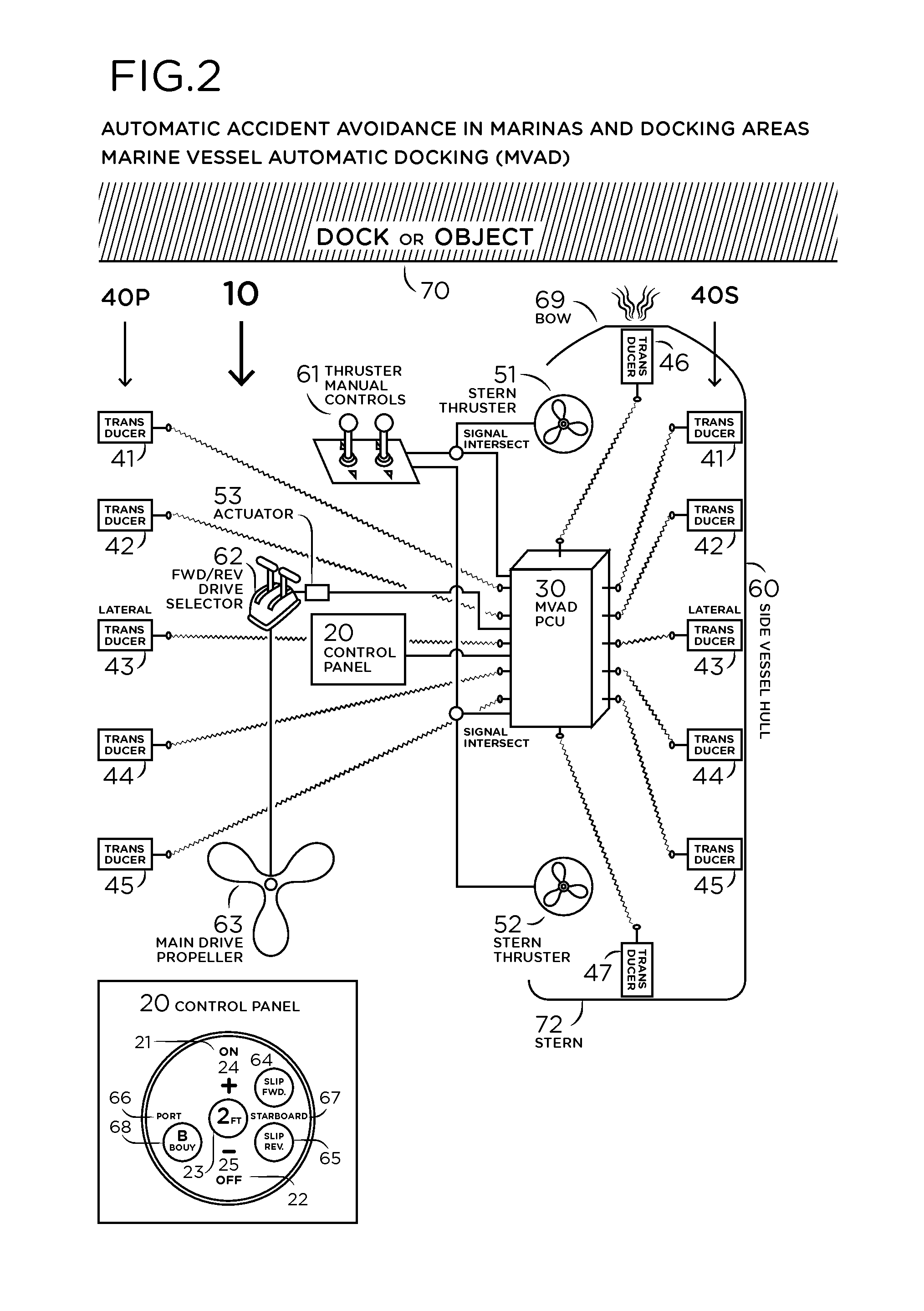Automatic Docking System
a docking system and automatic technology, applied in the direction of instruments, vessel construction, marine propulsion, etc., can solve the problems of increasing the risk associated with docking operation, increasing the need for skill and extra deck hands, and increasing the need for docking operations. , to save labor during the docking process, prevent damage to the dock, and save time in docking operations
- Summary
- Abstract
- Description
- Claims
- Application Information
AI Technical Summary
Benefits of technology
Problems solved by technology
Method used
Image
Examples
Embodiment Construction
[0060]FIG. 1 illustrates a completely automatic docking system (10) of integrated interactive proximity sensing feedback and automatic control of water vessel positioning for a marine vessel which requires no human operator after setting the system in operation. The automatic system (10) comprises at least two means (40P) (port) and (40S) (starboard) for sensing distance between at least five spaced locations on each side of a hull (60) of a marine vessel and an external structure (70), such as a dock or another vessel that the marine vessel is approaching for the purpose of docking the marine vessel adjacent to the external structure, another vessel or dock. (70)
[0061]The means for determining distance comprises a plurality of distance sensing transducers, preferably including a pair of fore side transducers (41) and (42) for sensing distance between the fore position on the side of the hull (60) and the external object (70), and a pair of aft transducers (44) and (45) for sensing ...
PUM
 Login to View More
Login to View More Abstract
Description
Claims
Application Information
 Login to View More
Login to View More - R&D
- Intellectual Property
- Life Sciences
- Materials
- Tech Scout
- Unparalleled Data Quality
- Higher Quality Content
- 60% Fewer Hallucinations
Browse by: Latest US Patents, China's latest patents, Technical Efficacy Thesaurus, Application Domain, Technology Topic, Popular Technical Reports.
© 2025 PatSnap. All rights reserved.Legal|Privacy policy|Modern Slavery Act Transparency Statement|Sitemap|About US| Contact US: help@patsnap.com



